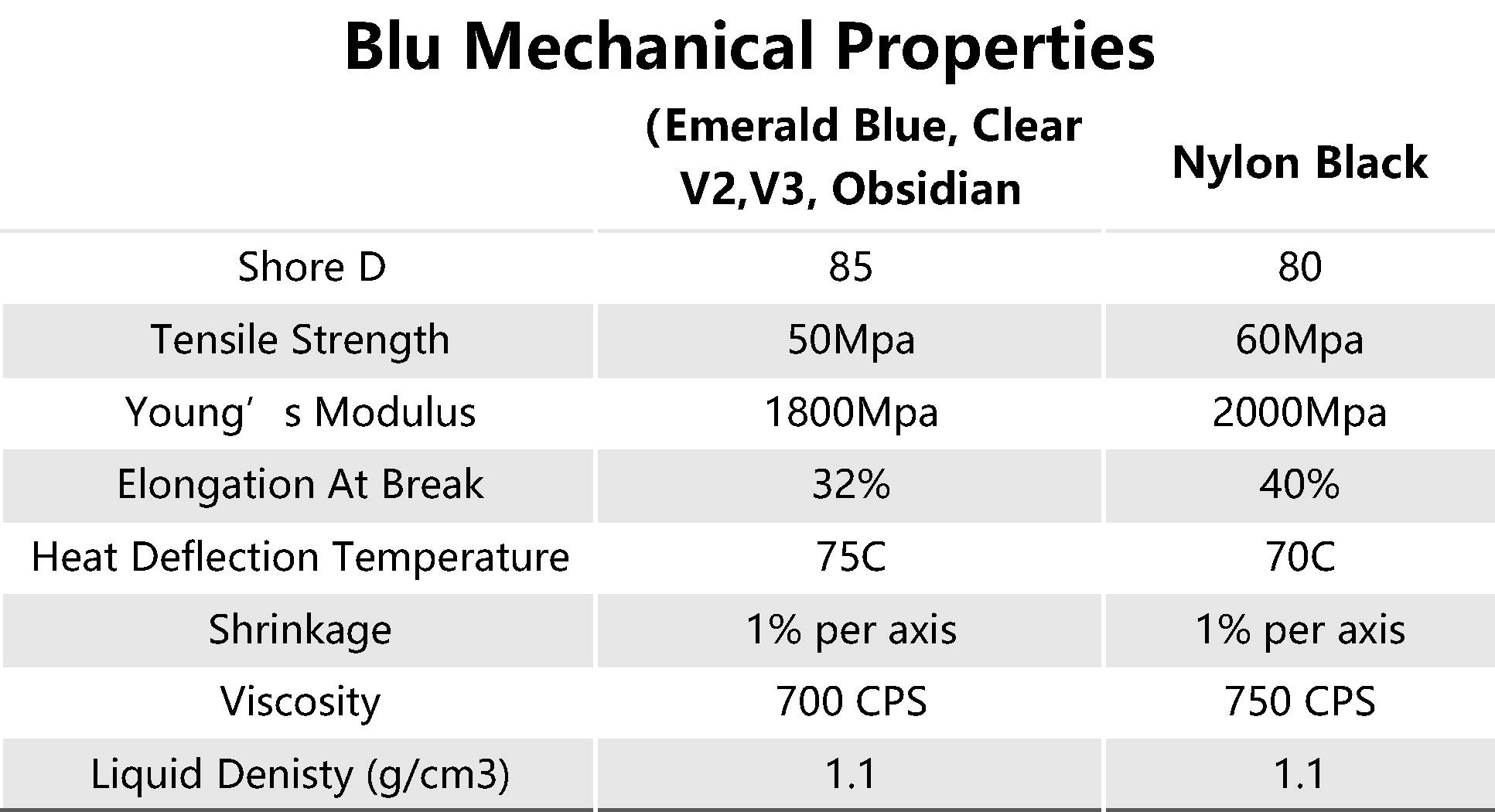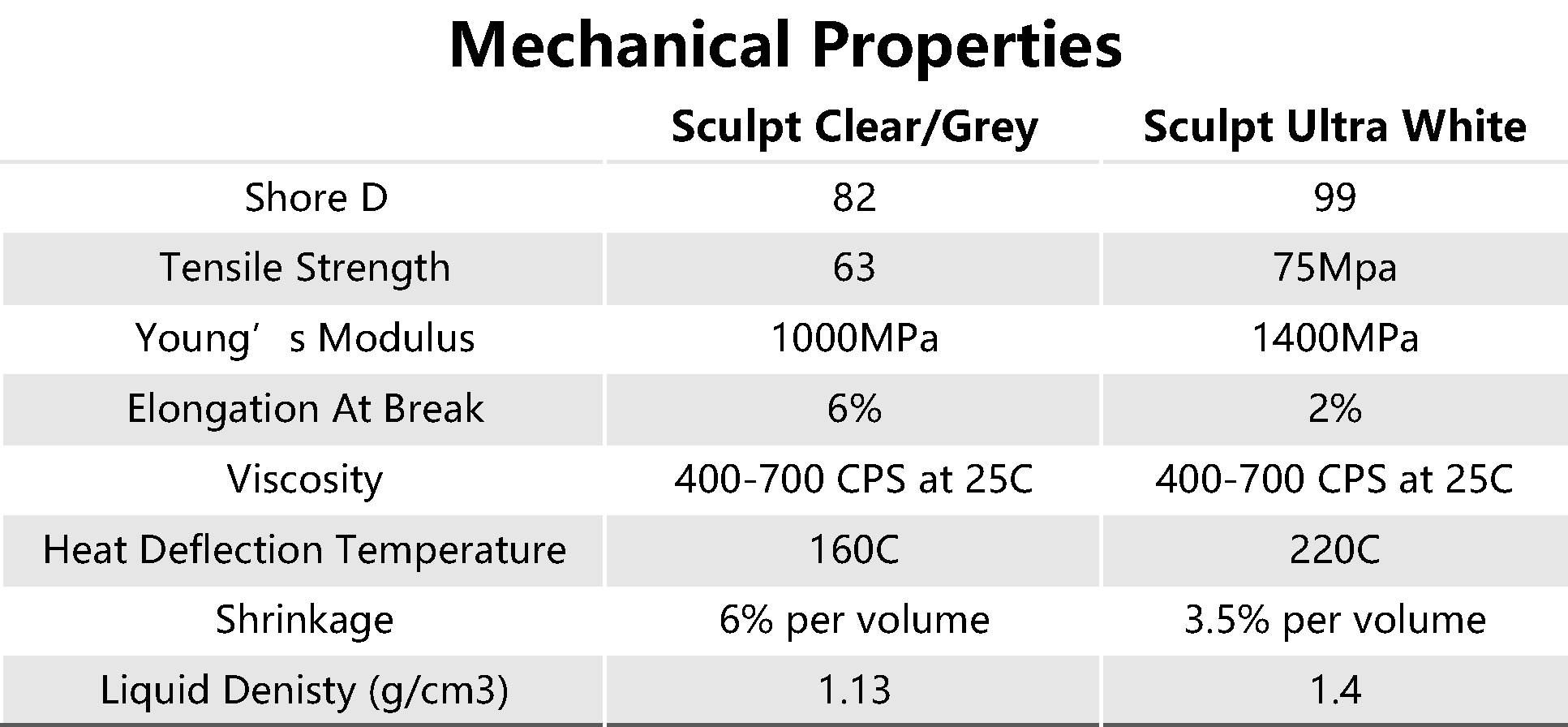- Joined
- Aug 6, 2022
- Messages
- 3,251
- Reaction score
- 2,951
Yesterday, I launched an experiment in which I used Evergreen polystyrene to make fins on an MD 18mm rocket. When I recovered the rocket, the fins were overly soft at their root edges due to the heat from the motor. For those not aware polystyrene is known for its low glass transition point; you can basically shape it however you want if you put it in boiling water at 212F.
Looking forward, I'm planning to 3D print some fin cans. Have been planning to use Siraya Tech Blu Tough resin, but this made me think of the temperature capability. ST advertises the "Heat Deflection Temperature" as 75C. They have another resin, Sculpt Ultra White, with an advertised HDT of 220C. It's a little harder, with greater tensile strength, but not as stiff and has much lower elongation at break. I'm concerned that the SUW may not have the toughness and I could end up chipping/cracking/snapping fins on rough landings. Also, the lower stiffness should allow it to flutter at lower speed when pushed toward the transonic (29mm power, not 18), and the lower toughness could lead to it shedding fins pretty spectacularly.
The three basic configurations I'm looking at are:
BT-20 MD, or BT-20+ "MD+"
24mm MMT with ST-10 (1.00 ID, 1.04 OD) BT
BT-55 or LT-125 with 29mm MMT cardboard tubing between the motor and the fin can
All configurations would have cardboard between the fin can and the motor, but some more cardboard than others. The goal on any of them would ultimately be to make full use of AT Hobbyline cases and, for the 29mm, probe up into single-use G80 and even H power with a CTI 4-grain case if they ever start shipping reloads. The latter will definitely either go supersonic or shred trying. So it's a pretty strong tradeoff between mechanical integrity and temperature capability.
Looking for any first-hand experience from people resin-printing MPR fin cans.
ETA: I'm not a materials engineer, but I did take a materials engineering course in engineering school. Thinking about it, I can't figure out how a material can have lower stiffness and much lower elongation at break, but significantly greater tensile strength. Either my ignorance is showing, or that combination doesn't pencil out. Higher hardness, higher tensile strength and lower elongation at break all fit together, but throw in significantly lower Young's modulus and I don't see how it's all possible at the same time.

--------------------------------------------------------------------------------------------------------------------------------------------------------------------------------

Looking forward, I'm planning to 3D print some fin cans. Have been planning to use Siraya Tech Blu Tough resin, but this made me think of the temperature capability. ST advertises the "Heat Deflection Temperature" as 75C. They have another resin, Sculpt Ultra White, with an advertised HDT of 220C. It's a little harder, with greater tensile strength, but not as stiff and has much lower elongation at break. I'm concerned that the SUW may not have the toughness and I could end up chipping/cracking/snapping fins on rough landings. Also, the lower stiffness should allow it to flutter at lower speed when pushed toward the transonic (29mm power, not 18), and the lower toughness could lead to it shedding fins pretty spectacularly.
The three basic configurations I'm looking at are:
BT-20 MD, or BT-20+ "MD+"
24mm MMT with ST-10 (1.00 ID, 1.04 OD) BT
BT-55 or LT-125 with 29mm MMT cardboard tubing between the motor and the fin can
All configurations would have cardboard between the fin can and the motor, but some more cardboard than others. The goal on any of them would ultimately be to make full use of AT Hobbyline cases and, for the 29mm, probe up into single-use G80 and even H power with a CTI 4-grain case if they ever start shipping reloads. The latter will definitely either go supersonic or shred trying. So it's a pretty strong tradeoff between mechanical integrity and temperature capability.
Looking for any first-hand experience from people resin-printing MPR fin cans.
ETA: I'm not a materials engineer, but I did take a materials engineering course in engineering school. Thinking about it, I can't figure out how a material can have lower stiffness and much lower elongation at break, but significantly greater tensile strength. Either my ignorance is showing, or that combination doesn't pencil out. Higher hardness, higher tensile strength and lower elongation at break all fit together, but throw in significantly lower Young's modulus and I don't see how it's all possible at the same time.
--------------------------------------------------------------------------------------------------------------------------------------------------------------------------------
Last edited:




